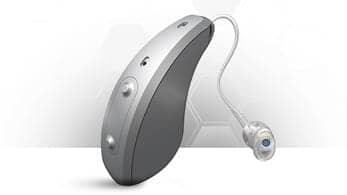Otitis media—more commonly known as ear infection—is the leading cause of pediatric healthcare visits and the most frequent reason children are prescribed antibiotics or undergo surgery. Researchers from the University of Texas Medical Branch (UTMB) at Galveston have discovered that, during recent years, several interventions have been introduced aiming to decrease the otitis media burden—and they’ve been successful.
??The 11-year study, published online November 25 in the journal JAMA Pediatrics, examined the trends in otitis media-related healthcare use in the United States for the first 10 years that a new type of vaccine came into use. The researchers, led by Dr Tasnee Chonmaitree, looked at insurance claims data from a nationwide managed healthcare plan of 7.82 million children under 6 visiting a healthcare provider for an ear infection or a complication or surgical intervention related to ear infection. Data was taken from insurance claims between 2001 and 2011. The first pneumococcal conjugate vaccine was introduced in the United States in 2000.??
The researchers found there was a downward trend in visits from 2004 to 2011, with a significant drop in children younger than 2 years that coincided with the advent of the 13-valent vaccine, or PCV-13, in 2010. ??Chonmaitree, professor of pediatrics in the division of pediatric infectious diseases, noted that this is the first study to determine otitis media-related healthcare use trends since the marketing of PCV-13 in the United States.
??During the previous decade, considerable medical progress had been made in otitis media prevention. Among the major interventions are conjugate vaccines against Streptococcus pneumoniae, a major pathogen of acute otitis media. In the United States, 7-valent pneumococcal conjugate vaccine, PCV-7, was licensed in 2000, and routine PCV-7 vaccination has been associated with a significant reduction in ear infections, as well as a decrease in tube insertion related to recurrent and chronic ear infections.
??In March 2010, the PCV-13 was licensed for use among US children 6 weeks to 6 years old. It succeeded PCV-7 and expanded coverage by offering protection against six additional strains of the bacteria. Today, roughly 90% of children under 2 receive the PCV-13 vaccine.
??“Medical interventions in the past decade, especially with the introduction of new vaccines, have really reduced the burden of this common childhood disease,” said Chonmaitree.??
How common? About 80% of children will have experienced one or more episodes of otitis media by their third birthday, and more than 40% will have had three or more episodes. ??In addition, 80% of visits resulted in an antibiotic prescription. Earlier this year, however, the American Academy of Pediatrics (AAP) updated their clinical practice guidelines to allow an observation option, without initial antibiotic treatment in children who do not have serious ear infections and are older than 2, and in younger children with unilateral otitis media (infection in only one ear). ??
Chonmaitree is a member of the committee that made the new AAP recommendations and said that overuse of antibiotics is a significant factor fueling antibiotic resistance. ??“Otitis media has a high socioeconomic impact worldwide,” said Chonmaitree. “In the United States, an estimated $4 billion is spent every year on otitis media-related healthcare.”
Source: University of Texas Medical Department





